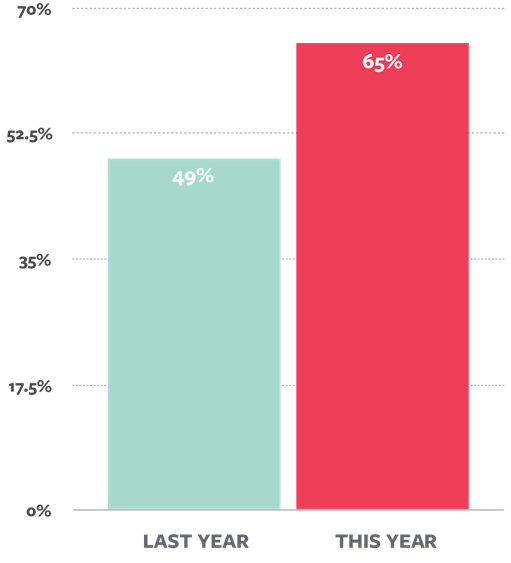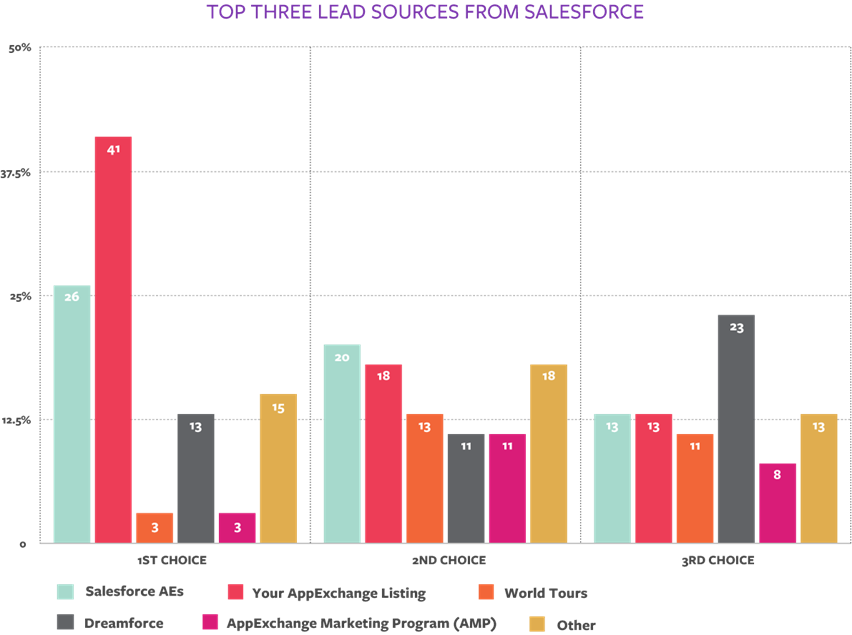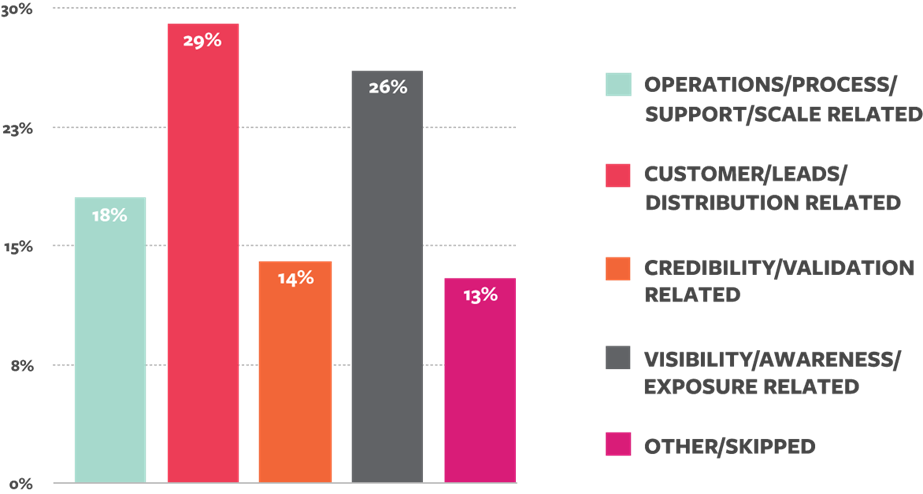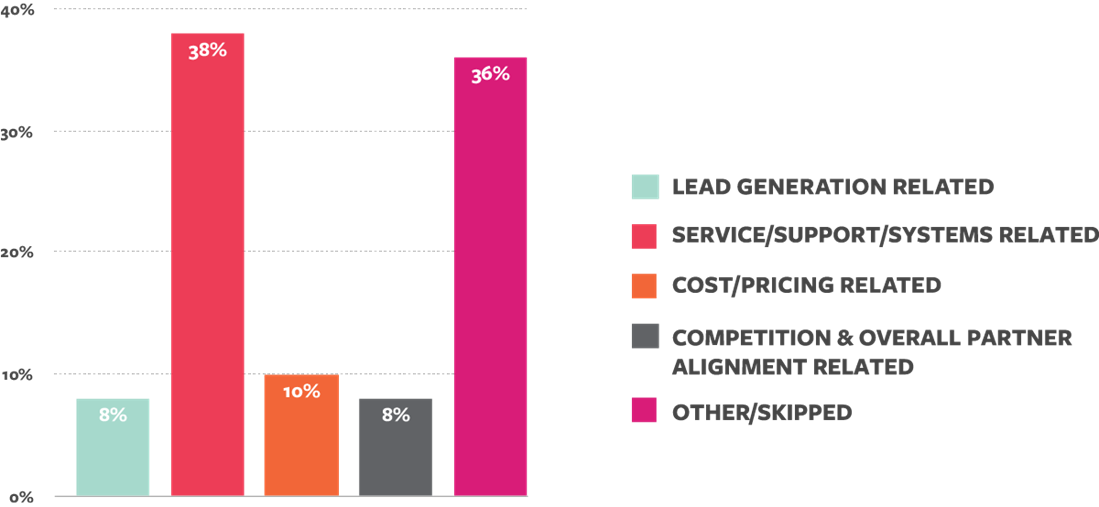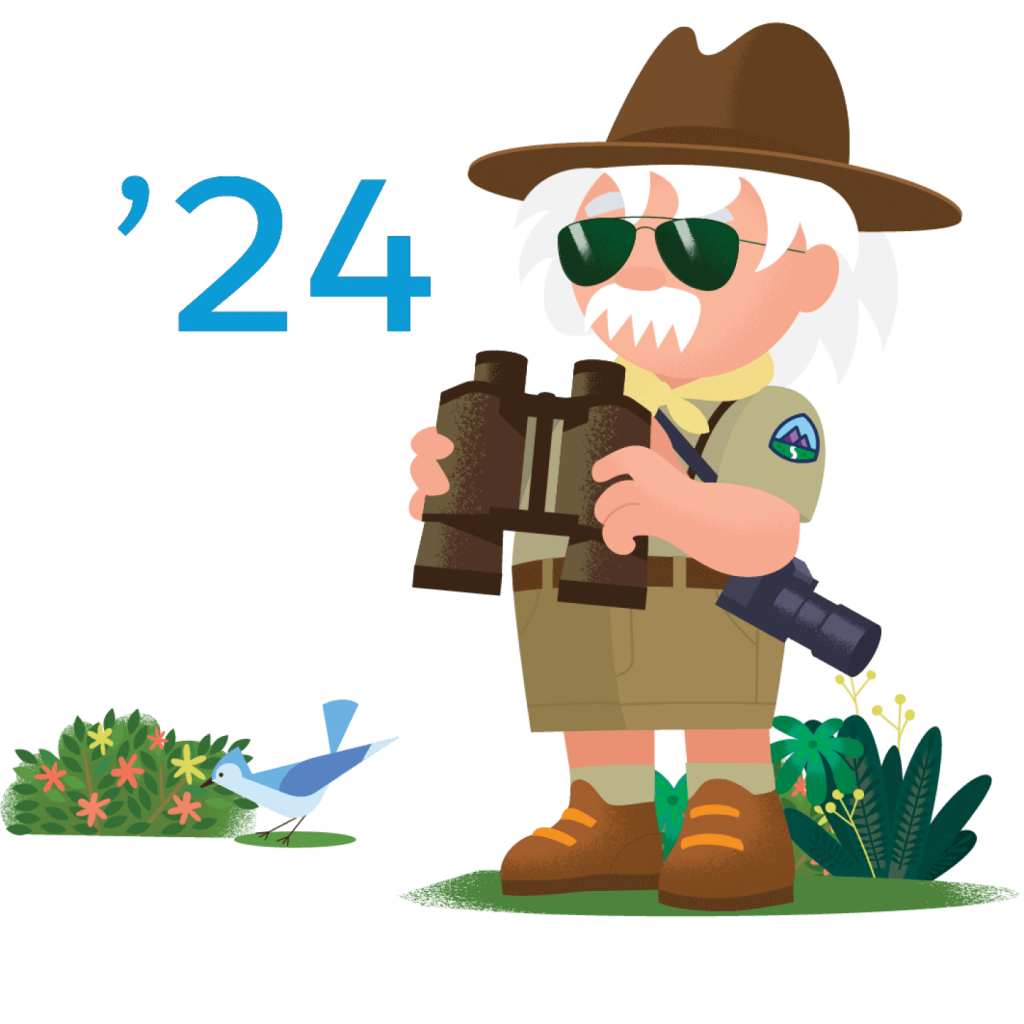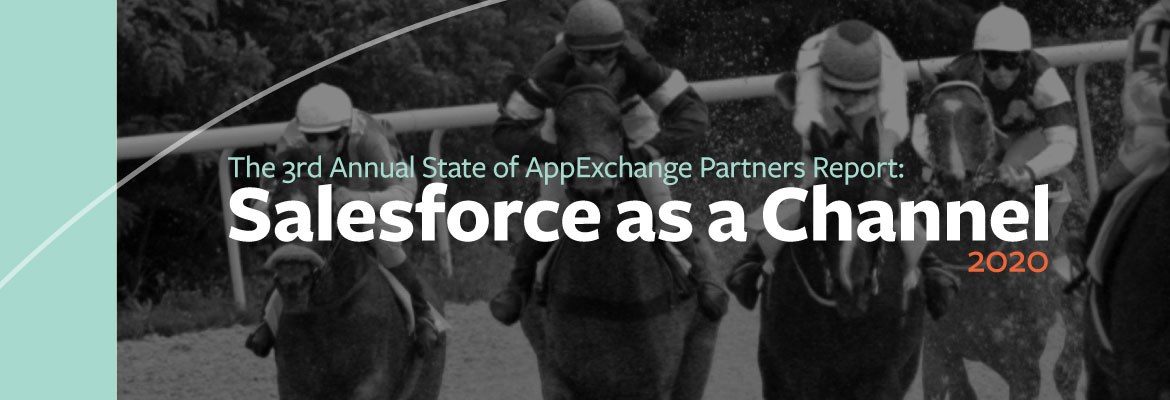
In light of the rapidly changing nature of the situation the world finds itself in, we are evolving our analysis of the ecosystem. And with that, our understanding of the 3rd Annual State of AppExchange Partner Report is changing.
At its core, we believe the report is valid and valuable. However, the Growth section of the report represents a different time with entirely different expectations for the year. We are in the process of conducting a new survey to understand how Partners are responding and will make it available to all once we finish collecting and analyzing the results.
You can download the report in full by clicking the image below.
Salesforce as a Channel
This section of the report provides insights on all things channel — lead sources, program results, and we gave survey participants the chance to provide open feedback on what was most beneficial and what they would change.
65% of survey respondents stated their participation in the ISV program increased their revenue.
Salesforce has continued to tweak the Partner Program to provide more direct impacts to revenue. As we covered earlier this year, Woodson Martin, EVP and GM of the AppExchange, announced that major changes were coming to the partner program. As of March, details have gone public, and we’ve brought together the changes partners care about most here.
Lead Sources from the Salesforce Channel
The Salesforce channel continues to support partner growth. 48% of leads are coming from the channel — this is up 10% from two years ago.
This year, we shifted our focus in how we examined the lead sources from Salesforce and had survey participants rank their top 3 lead sources so we could examine in aggregate where partners found the greatest value.
Last year saw tremendous investment and innovation on the AppExchange marketplace. So, it should come as no surprise that nearly half (41%) of respondents stated that their number one lead driver was their AppExchange listing.
With enhancements in analytics, search tools, and recommendations, we’ll be keeping a close eye on this year’s results to see how these technologies are being adopted and whether or not partners see them paying off.
With the new Partner Program enhancements, partners will have greater access to built-in app analytics. As we mentioned in the previous section, there is always some lag time as these new technologies are adopted.
Salesforce AEs took the second spot. More than a quarter of respondents noted that it was their number one lead driver, and 20% as their number two. Dreamforce was the clear third-place winner. However, given the recent global pandemic of COVID-19, we watch how this not only impacts events and partners’ investments but how this will shift the dynamics of where leads come from in the channel.
Analysis from our Open Feedback Section
As noted earlier, we gave respondents a chance to provide open feedback to two questions, “What would you say is the most beneficial thing about the AppExchange for partners?” and “If Salesforce could improve one area for partners, what would it be?”
Overwhelmingly, partners had a lot to say. 92% of participants provided answers. We took the answers to these questions and categorized them based on the themes they represented. Four themes emerged for each section.
What is the Most Beneficial Thing About the AppExchange for Partners?
The AppExchange is known to be a great way to drive business success, whether that is through lead acquisition, customer growth, or even as an amplifier for distribution. What we found as we cross-sectioned the responses by company size is that smaller companies focused on leads and visibility, while larger organizations focused on operations and scale.
If Salesforce Could Improve One Area for Partners, What Would It Be?
One of the more consistent areas we saw respondents noting was the need for additional contact and go-to-market support from Partner Account Managers (PAMs) on the ISV team. Partners expressed concern around availability to consult as well as providing coaching on strategies for successful ISVs.
Partners, however, shouldn’t be disheartened. This is a normal pressure that is seen in the Prime stage — Adizes notes that depth and managerial support and coverage are commonly seen as areas where additional effort must be focused to ensure long-term success.
Why Selling with Salesforce is More Important Now than Ever Before
While specific selling with Salesforce tactics were not captured in this section of the report, we feel it is more important to hone this skill than ever before. Salesforce presents a wide ecosystem for partners to drive customer satisfaction, reduce churn, and bring in new logos.
Here are some key components to keep in mind when you are creating a strategy to sell with Salesforce.
Why you should always be thinking of whitespace
Partners often fall short on carving out and defining their whitespace in the ecosystem. Your product’s whitespace (at least in terms of selling with Salesforce) is how you fill gaps in their solution or reach highly specialized industries and market segments.
Salesforce regularly reviews under-penetrated areas, and extra emphasis is placed on teams to make inroads. If you sell to non-Salesforce customers, note who they are when talking with your AE or PAM. Together you can create a co-selling strategy and make yourself a trusted advisor and partner.
We see that the best partners who know their whitespace, like Geneia, can rapidly respond to Salesforce’s product strategy to meet changing market needs. To respond to the COVID-19 pandemic and make the best use of Salesforce’s free trial of Health Cloud for providers by releasing a free light-weight product to assist healthcare providers stand up call centers to deal with unprecedented call volume. This allows those using Health Cloud to get started faster and works in lock-step with Salesforce’s free-trial strategy.
Geneia’s Theon® Platform – Innovative Care Management for COVID-19
Know what audience you are approaching
With nearly 40,000 employees around the globe, it is challenging to know who to reach out to and when. In our What You Didn’t Know About Selling With Salesforce Webinar, CodeScience Alliances Manager, Erin Murray, discusses this exact point with the team at Salesforce.
Primarily, ISVs should focus on these five roles:
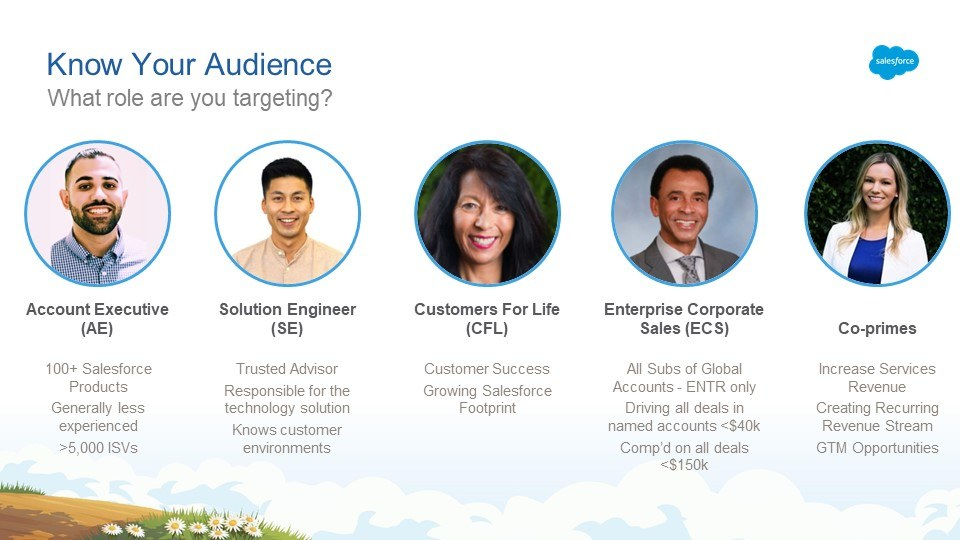
However, each role has unique goals, and knowing the right pieces of information and how to present it are paramount to your success.
If you are a partner and not using the Partner Community, you are failing to leverage one of the most valuable tools at your disposal. With exclusive information and access to internal employees at Salesforce, the Partner Community gives you the chance to connect with peers in specific groups. If you’re not sure where to go or what to do, this post discusses how to get started.
For more nuanced questions or questions that are specific to your business, Salesforce provides a wide variety of office hours. You can access the full list here: https://partners.salesforce.com/s/education/general/Partner_Events#z
We are continuing to talk with ISVs about how their strategies are changing during this crisis and are conducting a survey for current AppExchange partners. If you’d like to participate, you can follow this link: https://www.surveymonkey.com/r/covid-19-response-survey
Once we finish this survey, we’ll release the finding here on our blog, as well as providing a free to access PDF. Remember, we are all in this together.
Our mission is to help partners on the AppExchange. Now,more than ever, it is important to have a partner with you as you navigate Salesforce. If you need help, get in touch today.

